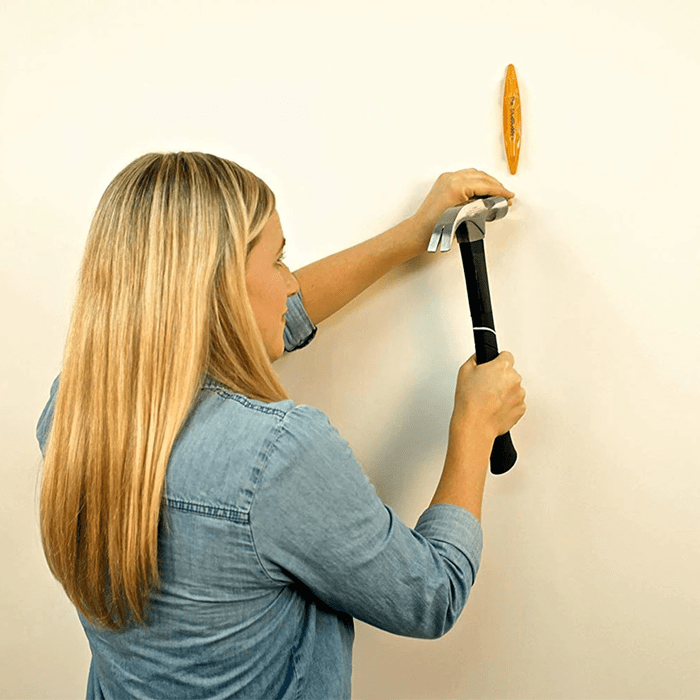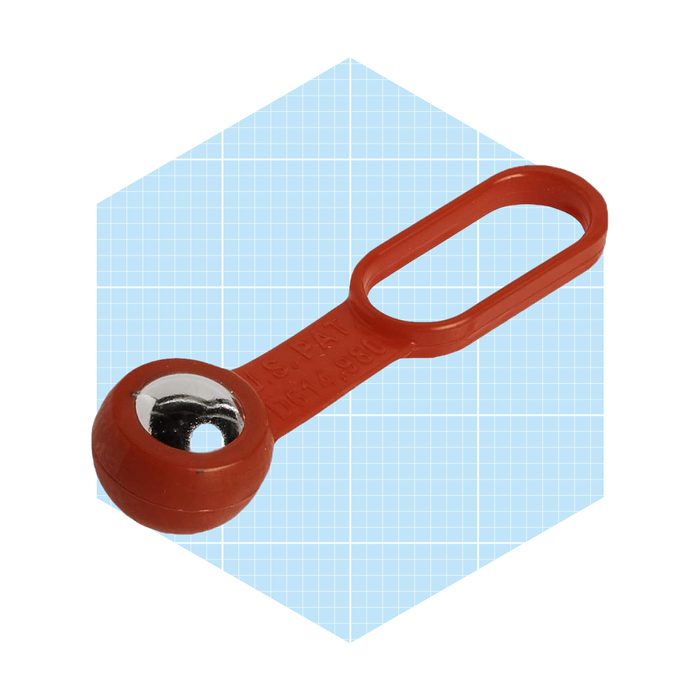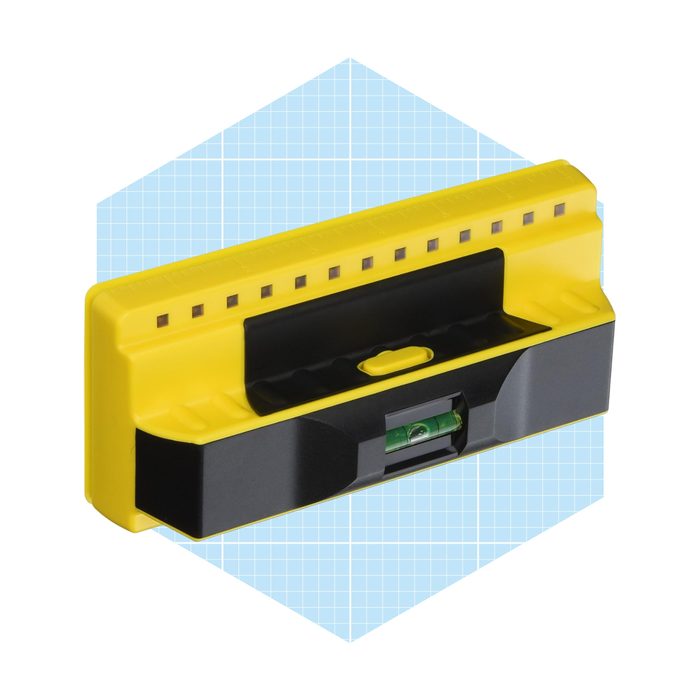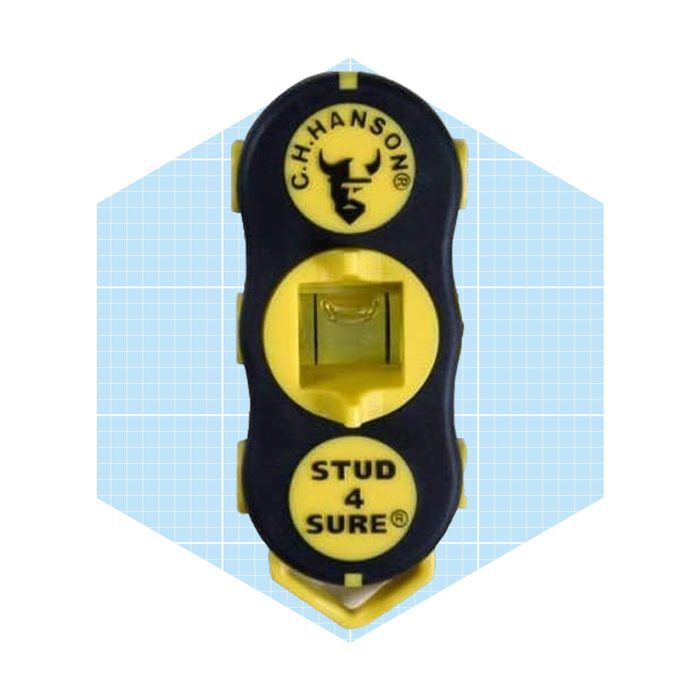Take the guesswork out of locating the studs behind your walls with one of these stud finders and hang heavy items worry-free.
Our editors and experts handpick every product we feature. We may earn a commission from your purchases.Learn more.


Take the guesswork out of locating the studs behind your walls with one of these stud finders and hang heavy items worry-free.
Our editors and experts handpick every product we feature. We may earn a commission from your purchases.Learn more.

Pros:
Cons:
At the top of our list is the overall best stud finder, the Zircon MultiScanner L550. According to our in-depth review of the similar HD900 model, Zircon stud finders are beasts that tackle a variety of projects. Apart from studs, this scanner locates metal and electrical wiring, making it useful for avoiding both during drilling. A deep scan function locates studs set farther back into the wall, up to 1.5 inches deep.
Using sensors that pick up on density variations behind the wall, the unit lights up and makes a clear beeping noise when it detects the center of a stud. We also love that the bright yellow hue makes it difficult to misplace. And don’t let the compact size fool you—the bright LCD screen is easy to read, even in low light.

Pros:
Cons:
The Craftsman CMHT77633 Stud Finder provides the convenience and straightforward operation of an electric stud finder without breaking the bank. It can detect studs through 0.75 inches of drywall and the red LED clearly alerts the user when they’ve reached a stud.
Only two light indicators on the front—the red detection light and a green “on” light—make it simple to use, even for DIY newbies. Simply stock up on a few rechargeable nine-volt batteries to ensure it’s always ready to use.

Pros:
Cons:
Want something a little more portable, but not skilled enough to find a stud without a stud finder? Armed with a rare-earth magnet that generates 27 pounds of pull, the Rack-A-Tiers 52300 Studball Stud finder can detect nails and screws behind 0.625 inches of drywall as well as 0.75 inches of plywood and tile.
A colorful handle makes it easy to locate in a cluttered toolbox and the plastic body is less likely to leave marks on your wall. At just 3.35 inches long, it can stick to the wall on its own, which is a nifty perk.

Pros:
Cons:
When thicker wall materials are a main concern, this intelligent stud detector comes in handy. Not only does it belt a hearty “beep” at the center of a stud, but it also detects the stud’s edges, eliminating any guesswork. Apart from an easy-to-read backlit display, the stud finder comes in a variety of attractive colors that blend in with any toolkit.
It’s able to find a variety of different screw types, from shorter wood screws to larger drywall screws. The scanner can also read through two layers of drywall, hitting a depth of up to 1.5 inches (or 38 millimeters) deep.

Pros:
Cons:
The ProSensor 710+ Franklin Stud Finder may be expensive, but if you’re looking for a comprehensive and accurate idea of what’s behind your walls, this is a great choice.
The 13 sensors (each with a corresponding LED) let you visualize exactly where your studs lie across a 21-inch-wide area. An integrated ruler allows you to do quick measurements on the go without fumbling with a measuring tape. As a bonus, an ergonomic handle also makes it comfortable to hold and operate.

Pros:
Cons:
Made of plastic and heavy-duty rubber and measuring just 3.25 inches long, the CH Hanson 03040 Stud Finder isn’t just convenient to carry; it’s practically indestructible. I used this stud finder for several years and marveled at how much abuse it could endure without affecting accuracy.
With a bubble level, it can be used vertically or horizontally to detect metal up to one inch behind 0.5 inches of drywall. At this low price, it’s hard to pass up.

Pros:
Cons:
The tiny Studpop Magnetic stud finder is just 1.5 inches wide, the smallest option on our list. It’s extremely easy to use. Just move it across the wall and when its strong magnet detects a nail or screw, the ball pops up!
This straightforward indicator is great for those who prefer quick and easy results and don’t want to hassle with more complex options. The extra-large magnet works well for plaster-and-lath walls.

Pros:
Cons:
Capable of detecting nails and screws up to four inches deep, the Zircon MetalliScanner M40 Stud Finder is powerful enough for use on drywall and plaster walls. The entire sensor—along with the yellow LEDs—lights up bright blue, making it extremely easy to know when you’re on top of a stud.
This powerful sensor is also useful for locating other metal components like plumbing pipes, ductwork or rebar supports.

Pros:
Cons:
We love the one-piece design and simple operation of the Studbuddy stud finder. Its powerful magnet and light weight allow the magnetic force to stick to the wall when it finds a stud.
Because it stays on its own, this tool is great if you’re working alone. It’s also one of the cheapest options you can find. The compact size and lack of moving or electronic parts mean you can toss it around without damaging it.

Pros:
Cons:
When installing garage storage or stair railings, it’s important to ensure that studs brace any brackets or bars. The Black and Decker line laser stud finder locates studs and is a handy tool that helps DIYers level pictures, shelves and televisions.
The two-in-one line laser and stud sensor detects metal, live wires and studs while simultaneously offering a bright level line to ensure pictures and other wall hangings look and perform their best. At over $50 it’s a bit pricey, but considering it’s a two-in-one tool, we give it a pass.
“A stud finder is a handheld device used to locate wall studs and floor joists. A stud is a vertical beam that extends from the top to bottom of a wall that offers support and structure,” says Alanna Yee, Director of Global Communication Strategies at Zircon. “You’ll want to find a stud to secure heavy objects into the stud center, to install a window, door or electric box next to it or to avoid cutting into it. Not securing or anchoring objects to the stud can result in broken and ripped walls or falling objects,” she notes.
Yee says that a typical electronic stud finder works by sensing density changes. They determine the edge, center and direction of a stud as well as detect other objects behind the wall. However, electronic versions aren’t the only type of stud finder. There are also magnetic versions, which are less expensive by typically have fewer capabilities.
Consider these factors when choosing the best stud finder for you:
Finding the type of stud finder is just as important as locating the correct model. It’s also important to consider the project. “Stud finders typically are not recommended for use on lath and plaster because of the inconsistent way the lath is applied and its varying density,” warns Yee. “The use of wire mesh and metallic surfaces can also interfere with the tool’s sensor capabilities. Dense surfaces like concrete, brick and some tiles are not recommended. Stud finders are designed and recommended for interior use only.”
For big projects, an electronic stud finder may be the right choice. “Electronic stud finders sense density changes and manufacture a wide range of models that can find the center, edge and direction of studs, as well as metal and live electricity,” says Yee.
This is especially important to consider when working around electricity lines and plumbing. “Magnetic stud finders can be less expensive but are limited to detecting the nails or screws attaching the drywall to studs and cannot discern other items the way electronic stud finders can. To find studs, magnets can be inaccurate because the nails and screws could be placed at the edge of the stud and can also detect other metals.”
In addition to electronic vs. magnetic stud finders, there are different types of screens to consider. “LED versions use light indicators to designate a mode or indication while LCD screens display images or text onscreen. Functionally, LEDs can work well for their simplicity,” says Yee. “Stud finders can range from $14 for a basic model to $100 for multifunctional models with exclusive features.”
I’m a freelance writer who specializes in the home improvement, DIY and appliance space. Having spent more than five years as a residential and commercial carpenter in NYC–specializing in custom furniture construction and installation–I use my hands-on experience and expert insight to craft product reviews, buying guides and how-to articles. I have previously written for CNN Underscored, Business Insider and Popular Mechanics, in addition to Family Handyman.
Emily Way is an Associate Shopping Editor for Family Handyman with experience researching products and recommending the best designs to consumers. She researched and updated this piece. Way consulted Alanna Yee, Director of Global Communications Strategies at Zircon.
Because there are a variety of stud finders, we focused on finding a wide range of top-tier options for every project. While looking for the best stud finders, our shopping experts took into account the different applications, from mounting pictures and TVs to anchoring heavy furniture. Each wall material—be it tile, wood or plaster—is different, so it’s important to find the right tool for the job at hand.
We combed through top-rated stud finders, locating those with a mountain of positive ratings. From there, we narrowed down the list to include options from every price point, ensuring that we include a variety of different types for every DIY project. Then, we tested our top pick, the Zircon HD900. Our Senior Editor used it to re-install a bathroom towel bar. To confirm the scanner’s accuracy, we tested it against a nice magnetic stud finder and a cheaper, electronic version. All stud finders located the stud in question. Looking at the cost, quality and reviews, it quickly became our best overall winner.
While safe to use, stud finders may scratch or damage walls, so always operate them with care. Yee mentions that some stud finders use velcro or gliding pads that make for smoother scanning and do not damage walls. For delicate surfaces or specialized paint jobs, this type is your best bet.
Stud finders will either be a center finder or edge finder model. An edge finder only finds the edges of studs in your wall, so you’ll need to determine the center. A center finder displays the center and edges of the studs. Center finders tend to be more expensive, but for many it’s worth the price to get more detailed information about what’s behind your walls.
Studs are typically 16 inches apart. The distance can vary in older homes, but it’s rare that your studs would ever be more than 24 inches apart. To find the distance in your home, use your stud finder on a large wall and measure the distance between each stud.
It’s fairly common for stud finders to go off when they detect a pipe or other object that isn’t a stud behind your wall. You’ll see less of this in higher-end models, but it’s always best to double-check the work of your stud finder by locating three or more studs in your wall. If they are equidistant apart, you know that you’ve found studs and not something else and can continue with your project.